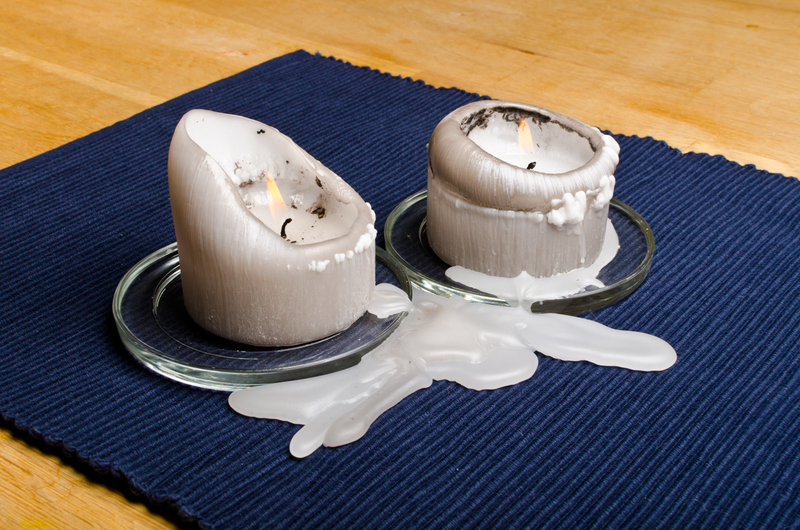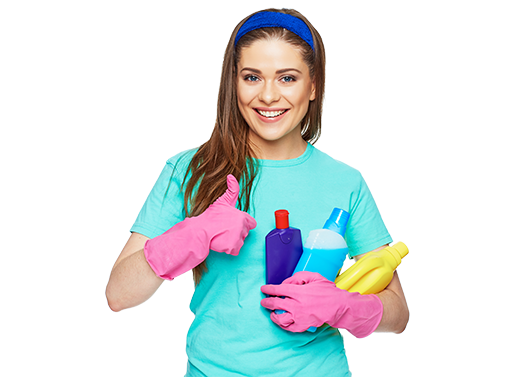Polished to Perfection: Cleaning Techniques
Posted on 24/06/2025
Polished to Perfection: Cleaning Techniques for Every Surface
Cleaning isn't just a chore--it's an art form that brings shine and clarity to your home or workspace. Polished to perfection is more than a mantra; it's a guarantee of gleaming results when you know the right cleaning techniques for various surfaces. In this comprehensive guide, we'll walk you through expert-backed methods and secrets of the trade, ensuring every corner sparkles.

Understanding the Importance of Effective Cleaning Techniques
*Why does* meticulous cleaning matter? Polishing to perfection doesn't only make things look good--it also preserves materials, extends their lifespan, and enhances hygienic conditions. Using proper polishing and cleaning methods for each surface is the secret to achieving that coveted, lasting shine.
Benefits of Polished Surfaces
- Visual Appeal: Surfaces gleam, creating an inviting environment.
- Hygiene: Deep cleaning removes germs, bacteria, and allergens.
- Longevity: Proper techniques prevent damage and slow wear and tear.
- Value Retention: Well-maintained surfaces keep their worth--ideal for resale or rental situations.
General Polishing Techniques for a Clean Home
Before diving into specific materials, let's focus on a few universal methods for polishing that apply to most surfaces. These cleaning techniques are the first step in achieving a spotless finish:
- Dust Before Polishing: Always remove surface dust with a microfiber cloth or a gentle feather duster before applying any polish.
- Use the Two-Cloth Method: Wipe with a dampened cleaning cloth, then follow with a dry, clean cloth for buffing to a high-gloss shine.
- Always Test Products: When trying a new cleaner or polish, test it on a hidden area first to check for any adverse reactions.
- Follow the Grain: On wood or metal, always clean and polish following the grain for the best finish.
- Polish in Circles: For glass, mirrors, and stainless steel, circular motions help to eliminate streaks and bring out the brilliance.
Surface-Specific Cleaning and Polishing Methods
Different surfaces require specialized polished cleaning techniques. Here's how you can clean and polish your home to perfection, room by room and surface by surface.
Achieving Flawless Wood Finishes
*Wood* is elegant but susceptible to damage without proper care. Polishing wood involves both cleaning and conditioning. Here's a step-by-step for wood polishing perfection:
- Dust using a soft, dry microfiber cloth to prevent scratches.
- Apply a gentle wood cleaner or a solution of diluted dish soap, wiping with the grain.
- For deeper cleaning, use vinegar diluted in water (never use excessive humidity on wood).
- Dry thoroughly, then apply a high-quality wood polish or natural oil.
- Buff with a dry, clean cloth for an impeccable shine.
Glass and Mirror Gleam: Polished Clarity
Streak-free glass and mirrors are essential for a polished look. Here's how to polish glass to perfection:
- Remove dust with a lint-free cloth.
- Mix equal parts vinegar and water in a spray bottle for a DIY eco-friendly cleaner.
- Spray lightly and wipe with a microfiber cloth in circular motions.
- For stubborn marks, use a tiny dab of rubbing alcohol, then buff dry.
- Finish with a newspaper rubdown for traditional, flawless sparkle.
Stone Surfaces: Clean and Polish Without Damage
Granite, marble, and quartz countertops need a *gentle approach*. Harsh chemicals can etch or stain the surface. Perfect your stone polishing technique with these tips:
- Dust off crumbs and debris with a microfiber cloth.
- Use a pH-neutral stone cleaner or a mixture of mild dish soap and water.
- Never use vinegar, lemon, or abrasive scrubs.
- Rinse with a clean wet cloth, then dry immediately.
- Apply a specialized stone polish, following instructions for a shiny, protected finish.
Polished Metal: From Stainless Steel to Chrome
*Metal fixtures* in kitchens and bathrooms attract fingerprints and water marks. Here's how to polish metals:
- Clean first with a mild dish soap solution; rinse and dry.
- Apply olive oil or a dedicated metal polish with a clean cloth.
- Buff in the direction of the metal's grain, focusing on tough spots.
- For chrome, use a bit of vinegar for stubborn marks, but avoid leaving it on for too long.
Flooring Brilliance: Luster for Every Material
From hardwood to tile, achieving a polished floor finish requires tailored cleaning tricks:
- Wood Floors: Sweep or vacuum, mop with a damp cloth, and apply a hardwood polish. *Never soak wood flooring.*
- Tile Floors: Sweep, mop with a mixture of warm water and mild detergent, and buff with a soft towel.
- Vinyl/Laminate: Avoid excessive water; utilize manufacturer-recommended cleaners for a streak-free shine.
Pro Cleaning Techniques for Polished Results
Steam Cleaning: The Modern Path to Perfection
Steam cleaning uses high-temperature water vapor to remove dirt and bacteria from multiple surfaces. It's excellent for tiled floors, glass, and even certain fabrics. The method is eco-friendly and chemical-free, delivering sanitized brilliance.
- Review your steam cleaner's manual for compatible surfaces.
- Use distilled water to prevent buildup.
- Wipe surfaces immediately after steaming for a polished finish with no streaks.
Eco-Friendly and Gentle Cleaning Solutions
Many commercial polishes include harsh chemicals, but environmentally friendly cleaning techniques are rising in popularity. Common household items can deliver impressive, polished results:
- White vinegar: Ideal for glass and some metals.
- Baking soda: Gently scrubs without scratching surfaces.
- Lemon juice: Perfect for cutting through grease, but avoid on stone.
- Olive oil: Adds natural luster to wood and leather.
Always test on a small area before applying homemade solutions throughout.
Advanced Polishing: Tips from the Professionals
Maximizing Shine with Microfiber Technology
Microfiber cloths trap dirt and dust better than regular fabrics, thanks to their split fibers. For professional polishing results, always use high-quality microfiber towels:
- Choose a plush microfiber for dusting and buffing.
- Use a separate cloth for applying polish and another for final shine.
- Wash microfiber cloths separately from other laundry to avoid residue build-up that can reduce their effectiveness.
Machine-Aided Polishing Techniques
For large surfaces or stubborn tarnish, polishing machines can make the job faster and more effective. Ideal for hardwood floors, metals, and certain stones, these tools use rotating heads or pads to deliver even, consistent results.
- Follow manufacturer instructions for settings and compatible surfaces.
- Use the right attachment pad for the material--soft for wood, firmer for stone or metal.
- Do not over-polish; excessive buffing can wear down material or leave swirl marks.
Maintaining a Polished Look: Prevention is Key
Cleaning to a perfectly polished finish is only half the battle. To maintain your results:
- Use coasters, mats, and trays to protect surfaces from spills and scratches.
- Dust and wipe down surfaces regularly to prevent buildup.
- Address stains immediately to prevent permanent marks.
- Apply protective finishes as recommended by manufacturers (especially on wood and stone).
By incorporating these maintenance habits, you can keep your home or office glistening and polished to perfection for the long term.

Frequently Asked Questions about Polished Cleaning Techniques
- Is it safe to use vinegar on all surfaces? No. Avoid vinegar on natural stone like marble and granite, as it can etch and dull the finish.
- How often should I polish wood furniture? Every two to three months is sufficient. Over-polishing can lead to buildup.
- What's the trick to streak-free glass? Use a microfiber cloth or newspaper and a solution of equal parts vinegar and water. Buff in circles for best results.
- Are commercial polishes better than DIY solutions? Both can be effective. The right choice depends on the surface and personal preference for chemicals vs. natural cleaning agents.
Conclusion: Bringing It All Together
Achieving a polished and gleaming finish is about using the right cleaning technique for every type of surface. From wood and stone to glass and metal, knowing the proper products, methods, and tools can transform your space from dull to dazzling. Embrace these polished to perfection cleaning techniques for a home or workplace that's not only spotless, but also preserved and shining bright for years to come.
For more expert tips on cleaning, polishing, and maintaining your living and working spaces, bookmark this guide and share it with anyone who believes that every surface deserves to be polished to perfection.
```


